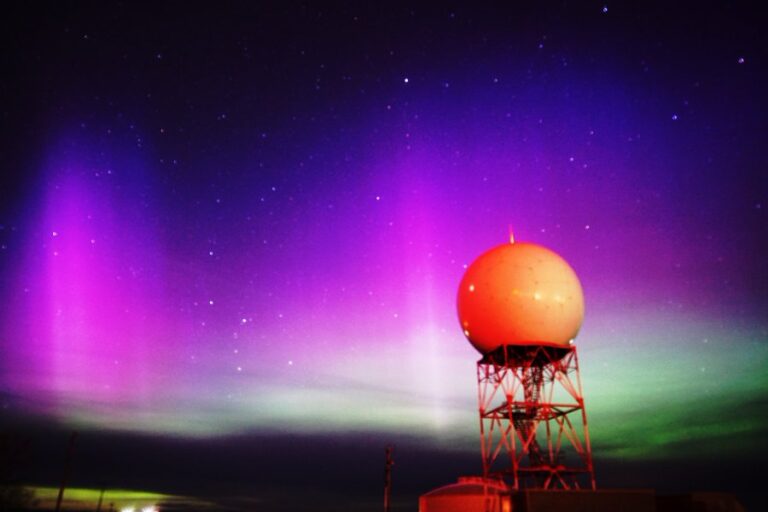A large one geomagnetic storm hit the Northern Hemisphere Sunday night, but most Californians hoping to see colorful waves of light known as the aurora borealis, or northern lights, were broken by cloudy conditions on the West Coast hidden in rarely seen from the view.
Although powerful geomagnetic storms caused by disturbances in the Earth’s magnetic field create beautiful auroras, they can disrupt navigation systems and satellites and create damaging currents in the power grid and pipelines, according to Space Weather Prediction Center of the National Oceanic and Atmospheric Administration.
Agency predicted Sunday that the nighttime lights could be seen in Northern California, but later revised its predictions several times to say they would only reach as far south as Oregon or Washington. NOAA maps show that people in Oregon and Washington have a 20% to 50% chance of viewing the aurora under clear weather conditions.
Some observers were hopeful, but the famously cloudy coastal skies did not cooperate.
A layer of fog descended on the Bay Area and clouds blanketed much of the West Coast on Sunday night, meteorologists said, meaning most of those hoping to see any celestial phenomena were out of luck. The approach of summer – with longer daylight hours – didn’t help either.
“By the time it’s dark enough to see any aurora on the West Coast the aurora may have moved to higher latitudes,” said Vahé Peroomian, a professor of physics and astronomy at the University of Southern California.
Taken by meteorologists with the National Weather Service in Riverton, Wyo. — a city about the same latitude as Eugene, Ore. — the stunning aurora with light waves in shades of green, pink and purple against the night sky.
While California’s chance of seeing an aurora is slim, Peroomian said it’s still worth keeping an eye out until 11 p.m. or so when the storm is past its peak.
Geomagnetic storms occur when energy from the sun’s outermost atmosphere disrupts Earth’s magnetic field, causing bands of green and red to light up the night sky. The natural electrical phenomenon can be seen especially near the North Pole, but sometimes reaches lower in Canada and the northern United States, where it is often captured by wildfire cameras.

An aurora borealis illuminates the northern horizon at Wolf Lake in Cloquet State Forest in Minnesota in 2019.
Alex Kormann/Getty Images 2019NOAA monitors indicated that there were disturbances in the Earth’s magnetic field more than double by Sunday evening. That energy drain has the potential to cause power grid fluctuations and increased drag on low orbiting satellites. But NOAA scientists predicted the worst effects would be felt overnight by people living above 50 degrees latitude, which falls in northern Canada.
“The sun releases large amounts of energy from its core in an explosive display we call a solar flare,” said Chronicle meteorologist Gerry Díaz, adding that flareups drive charged particles toward Earth which is deflected by the planet’s magnetic field.
As the particles slam into Earth’s atmosphere, they produce flashes of colorful light. When large numbers of particles hit the atmosphere, they can appear to move or “dance” across the night sky.
NOAA’s Space Weather Prediction Center tracker uses a scale known as the planetary k-index that measures disturbances in the earth’s magnetic field, with 1 being calm and 5 to 9 indicating a geomagnetic storm. The k-index value for most of Sunday afternoon and evening hovered between 7 and 8, indicating a storm large enough to push the aurora to lower latitudes than they normally reach.
Reach Nora Mishanec: nora.mishanec@sfchronicle.com
